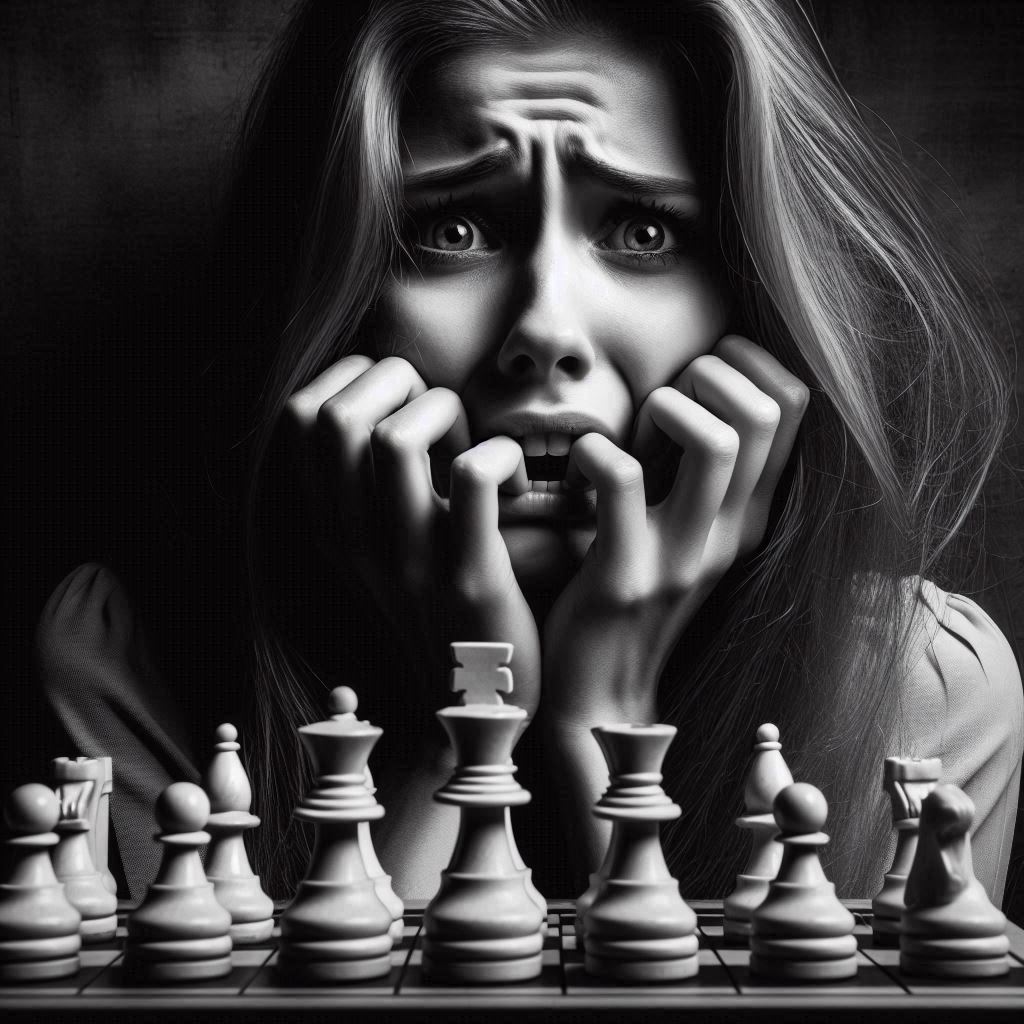Have you ever felt an overwhelming fear when confronted with certain colors? This might sound unusual, but it’s a real condition known as chromophobia.
For some, specific colors can trigger intense anxiety and discomfort. Understanding chromophobia is important both in psychology and art. It helps provide insight into how our brains react to stimuli.
In this post, we’ll explore what chromophobia is, its causes, and how it affects those who experience it. We’ll also look at how this condition is portrayed in art and its implications for mental health. Stick around to learn more about this fascinating and often misunderstood phenomenon.
What is Chromophobia?
Chromophobia, also known as chromatophobia, is an area of study that reveals some fascinating psychological insights. Let’s explore what it is, its roots, and why it happens.
Definition of Chromophobia
Chromophobia is an irrational fear or aversion to colors. People with this phobia might feel intense anxiety when they see certain colors. It may seem odd—how can someone fear something as common as colors, right? Yet, this condition is very real and can significantly impact a person’s life. For instance, an individual might avoid certain places or objects if they are of a color that triggers their phobia. The fear can range from mild discomfort to full-blown panic attacks.
Etymology of the Term
To understand why it’s called chromophobia, let’s break down the word itself. The term comes from two Greek words: ‘chroma’, meaning color, and ‘phobos’, meaning fear. Together, they form “chromophobia,” literally meaning the “fear of colors.” It’s interesting to note how ancient languages can help us understand modern psychological conditions.
Psychological Roots
The roots of chromophobia often lie in past experiences and learned responses. People may develop this fear due to:
- Trauma: A past traumatic event associated with a specific color.
- Learned Behavior: Observing others who exhibit a fear of certain colors.
- Cultural Factors: Associations made in cultural or societal contexts.
These connections underscore how deeply our emotions and associations are intertwined. This is more than just a simple dislike of a color—it’s about emotional and psychological responses that can be hard to control.
Understanding chromophobia provides a glimpse into the complex workings of the human mind. The interaction between personal experience, learned behavior, and cultural influences offers a multi-faceted view of why this fear can develop. Remember, if you know someone with this condition, it’s important to treat their fears with empathy and understanding.
Historical Context
Chromophobia, or the fear of colors, has roots that reach back through time. Different cultures and eras have had varying attitudes toward color. While some embraced vibrant hues, others approached color with caution or disdain. Let’s explore these perspectives in more detail.
Chromophobia in Ancient Cultures
In ancient civilizations, the aversion to certain colors was more nuanced than a straightforward fear or dislike. Colors held significant meaning and power. For instance, in ancient Egypt, green was associated with fertility and rebirth, while red often symbolized chaos and disorder. The aversion to certain colors wasn’t just about personal preference; it was tied to deep cultural and spiritual beliefs.
- Egypt: The ancient Egyptians had a complex color symbolism. Red, symbolizing the desert, could be feared for its association with desolation and chaos.
- Rome and Greece: Roman and Greek cultures also had distinct views on color. In Rome, purple was reserved for the elite, and its misuse could result in severe punishment. This restriction could cultivate a form of chromophobia among lower classes.
- China: In ancient China, white was the color of mourning and could evoke fear or discomfort during times of death.
Modern Perspectives on Chromophobia
Today’s views on chromophobia blend psychological insights with artistic interpretations. Modern psychology explains chromophobia as a specific phobia often linked to personal trauma or deep-rooted anxieties.
Therapists and psychologists often approach this fear by understanding the individual’s experiences with colors. For some, a specific color might be tied to a negative memory or subconscious association, fueling their aversion.
Art critics also examine chromophobia through a different lens. They study how art movements and individual artists handle color:
- Minimalism: Some minimalist artists reduce color to its bare essentials, sometimes opting for black and white palettes. This choice can reflect a societal tendency toward chromophobia—a fear of the chaos that color can bring.
- Expressionism: In contrast, expressionist artists use intense colors deliberately to provoke emotional reactions. This juxtaposition helps highlight how color choice affects perception and emotional response.
In Western societies, colors like black and white are often seen as neutral or safe, whereas bright colors can evoke strong emotional reactions, positive or negative. Meanwhile, some designers and artists use color aversion as a tool to guide their creations, intentionally playing on common discomforts to make a statement.
Understanding the historical context of chromophobia helps illuminate how cultural background and personal experience shape our perception of color. This explores not only of ancient beliefs but also how modern interpretations continue to evolve.
Psychological Aspects of Chromophobia
Chromophobia, the fear of colors, is a psychological condition that affects many individuals in unique ways. It often results from various factors and manifests through specific symptoms, making daily life a challenge for those who suffer from it.
Causes of Chromophobia
Several potential causes can lead to the development of chromophobia:
- Traumatic Experiences: Some people develop a fear of specific colors due to a traumatic event associated with that color. For example, a child who had a distressing experience with a red object might later fear the color red.
- Cultural Influences: In certain cultures, colors carry specific meanings that can instill fear. For example, in some traditions, white symbolizes death and may trigger anxiety.
- Personal Associations: Individual experiences and personal history can link certain colors to fear or discomfort. If someone had a negative experience wearing a particular color, they might avoid it in the future.
These causes illustrate how complex and deeply rooted chromophobia can be, stemming from a blend of past experiences and cultural contexts.
Symptoms and Manifestations
Individuals with chromophobia exhibit distinct reactions and emotional responses to colors:
- Behavioral Reactions: People with chromophobia may go to great lengths to avoid certain colors, including rearranging their environment or even declining social invitations that might expose them to those colors.
- Emotional Responses: Encountering the feared color can cause intense emotional reactions such as panic, anxiety, or even a sense of dread. These emotions might be overwhelming and can interfere with daily activities.
- Physical Symptoms: The presence of a specific color can trigger physical symptoms like sweating, shaking, or a racing heartbeat. These responses are part of the body’s natural fear response but can be distressing when triggered by colors.
Understanding these symptoms and their triggers helps paint a clearer picture of how chromophobia impacts those who suffer from it. It also underscores the importance of empathy and support in managing this unique phobia.
Chromophobia in Art and Design
Chromophobia, an aversion to colors, has left its mark on the world of art and design. This section explores how some artists have intentionally avoided colors and how color theory interacts with this aversion.
Impact on Artistic Expression
The fear of color can greatly influence an artist’s choice in their work. Some artists intentionally avoid or limit their use of colors due to chromophobia.
Many art movements have embraced limited or monochrome palettes. For instance, Minimalism focuses on simplicity, which often means using neutral colors or even just black and white. Artists like Kazimir Malevich used whites, blacks, and grays in his Suprematist works to focus on basic geometric shapes and pure artistic expression without the distraction of color.
Surrealism and Expressionism also have instances where artists avoided colors. They would instead rely on stark contrasts and muted tones to convey deeper emotions or the stark realities of life. This aversion can turn into an artistic strength, creating pieces that convey a more intense emotional impact without the use of bright colors.
Color Theory and Chromophobia
Understanding color theory helps in grasping why chromophobia exists in artwork. Color theory delves into how colors interact and the psychological effects they have on viewers. But what happens when someone has an aversion to colors?
- Color Saturation: Highly saturated colors can be overwhelming. Artists with chromophobia might stick to muted colors to avoid inducing anxiety in themselves or viewers.
- Color Harmony: Achieving balance with color can be tricky and mentally exhausting for someone with chromophobia. They might avoid using a variety of colors to escape this complexity.
- Color Symbolism: Colors come with societal and cultural meanings. Fear of misunderstanding or misinterpreting these symbols may lead artists to avoid colors altogether.
For example, black and white photography thrives on the absence of color, focusing instead on light and shadow to create depth and meaning. This is not only a technical choice but an emotional one, reflecting an preference for simplicity and clear-cut contrasts.
Understanding and working with chromophobia can open new ways of thinking and processing artistic ideas. It challenges the traditional usage of colors in art and allows more depth in monochromatic designs.
By recognizing the influence of chromophobia in art and design, we gain a deeper appreciation for the varied and rich tapestry of artistic expression. Whether it’s through minimalism, monochromatic creations, or a focused color palette, the absence of color can speak volumes.
Coping Mechanisms and Treatment
Facing chromophobia can be difficult. But there are ways to help. Here’s how you can manage and treat this fear.
Therapeutic Approaches
Various therapies can help those struggling with chromophobia. Cognitive-behavioral therapy (CBT) is one of the most effective. CBT helps you identify negative thought patterns and replace them with positive ones. If you fear the color red, for example, a CBT therapist will work with you to change how you think about it. This can lessen your anxiety.
Exposure therapy works well too. With this approach, you gradually expose yourself to the feared color in safe and controlled settings. Small steps lead to big changes. For example, if blue triggers your anxiety, you start by looking at pictures of the color. Gradually, you might wear blue clothes or decorate a small part of your room in blue.
Self-Help Techniques
There are simple strategies you can use at home to help manage chromophobia:
- Mindfulness and Meditation: These techniques can help calm your mind and reduce stress. Focus on your breathing or practice guided meditation to keep anxiety at bay.
- Journaling: Write down your emotions and thoughts about your fear. This can help you to understand what triggers your anxiety and how to manage it better.
- Visualization: Imagine yourself facing the color you fear in a positive and safe context. This can help lessen the fear over time.
- Breathing Exercises: Slow, deep breaths can help manage anxiety in situations where you face the color you fear. Practice deep breathing regularly, so it becomes second nature.
- Positive Affirmations: Remind yourself that colors, while frightening now, are not harmful. Repeating phrases like “I am safe” can help improve your mindset.
Here’s how you might apply these techniques:
- Practice mindfulness each morning for 10 minutes.
- Journal your feelings about a particular color before bed.
- Use visualization techniques while waiting in line or during a break at work.
If you’ve never tried these techniques, start small. Consistency is key. Over time, these methods can help you gain control over your fear.
Effective treatments and self-help strategies exist for chromophobia. It’s important to be patient and find what works best for you. Engaging in these coping mechanisms can gradually make a significant difference.
Conclusion
Understanding chromophobia is crucial for both psychological and artistic contexts. Knowing why people fear colors helps us support those who suffer from this condition. It also deepens our appreciation for art and design.
Summarizing Key Points
Throughout the post, we explored the basics of chromophobia, its causes, symptoms, and effects. Key points include:
- Definition of Chromophobia: This is an irrational fear of colors, impacting people’s daily lives.
- Causes and Symptoms: Trauma, cultural factors, or mental conditions can trigger chromophobia. Symptoms range from anxiety to physical reactions.
- Psychological Impact: This phobia can lead to serious mental health challenges.
- Artistic Impact: Artists and designers need to consider color perceptions in their work.
- Treatment Options: Therapy, medication, and lifestyle changes can help those affected.
Importance of Awareness
Recognizing chromophobia can benefit various fields. From psychologists aiding patients to artists creating more inclusive designs, awareness fosters better understanding and innovation.
Final Thoughts
While chromophobia might seem simple, it carries weight in both mental health and creative realms. By learning about it, we can break down barriers and offer practical, empathetic support. So next time you see a vibrant splash of color, think about the layers of meaning and emotion it might hold for others.








